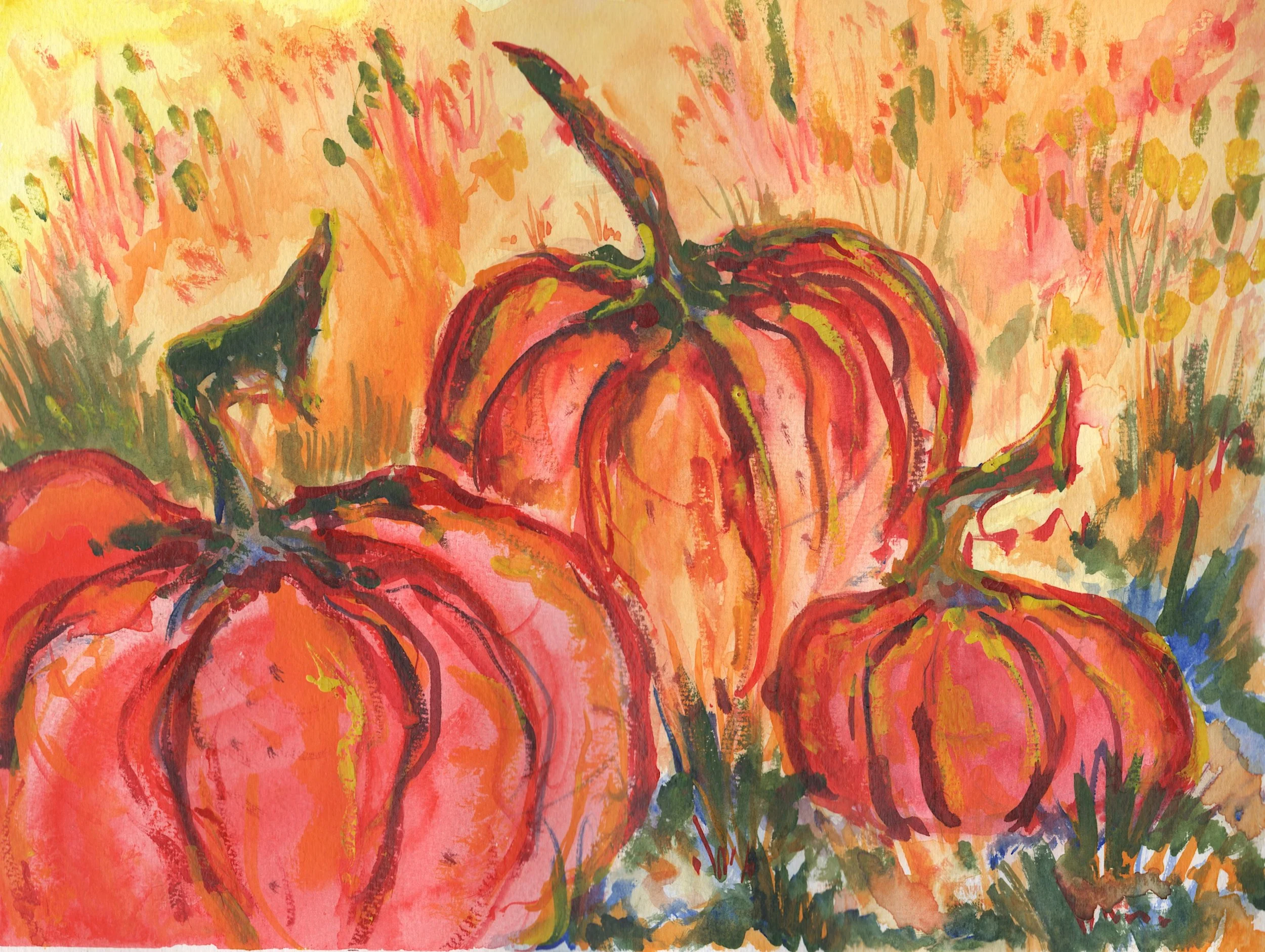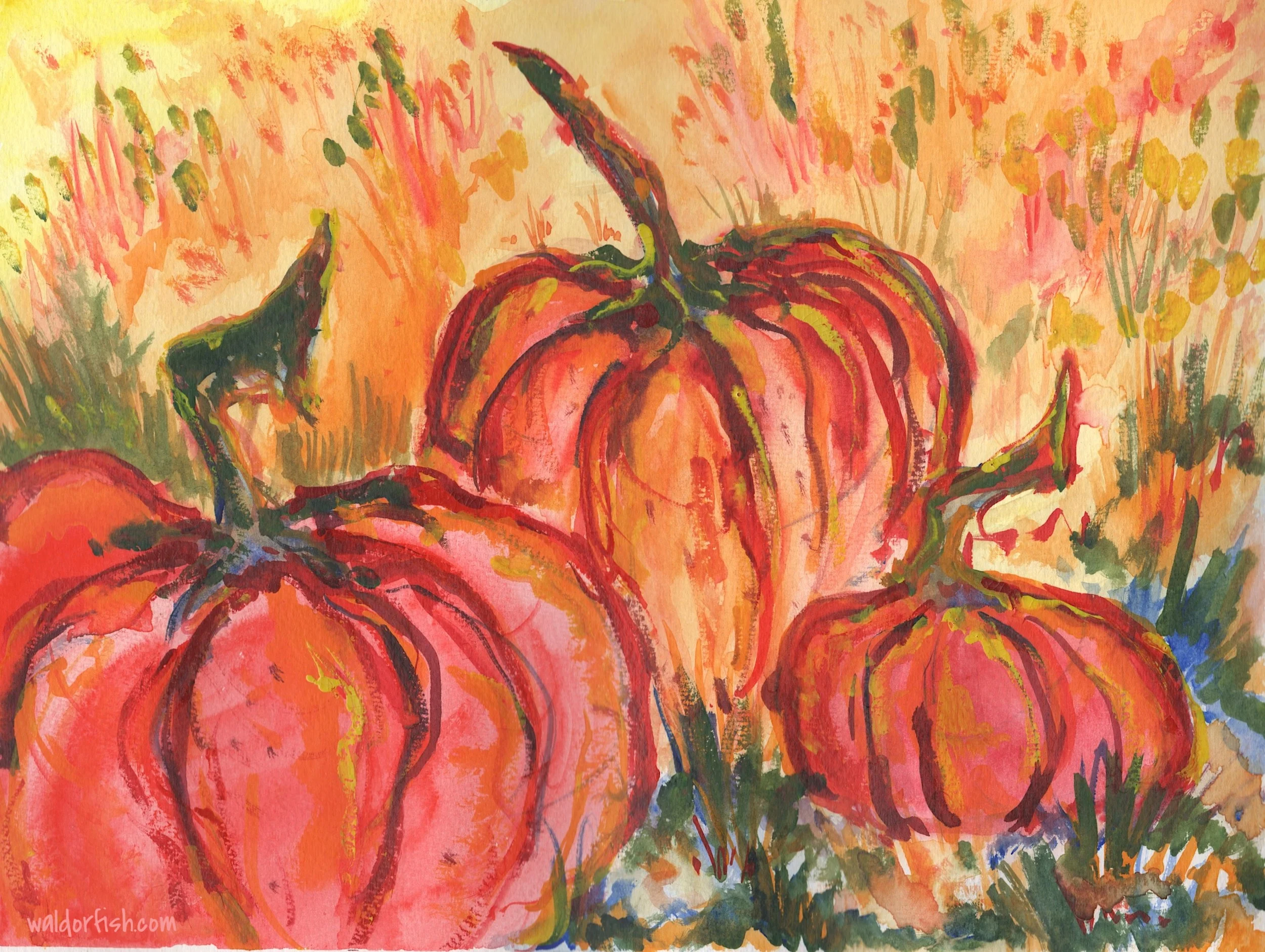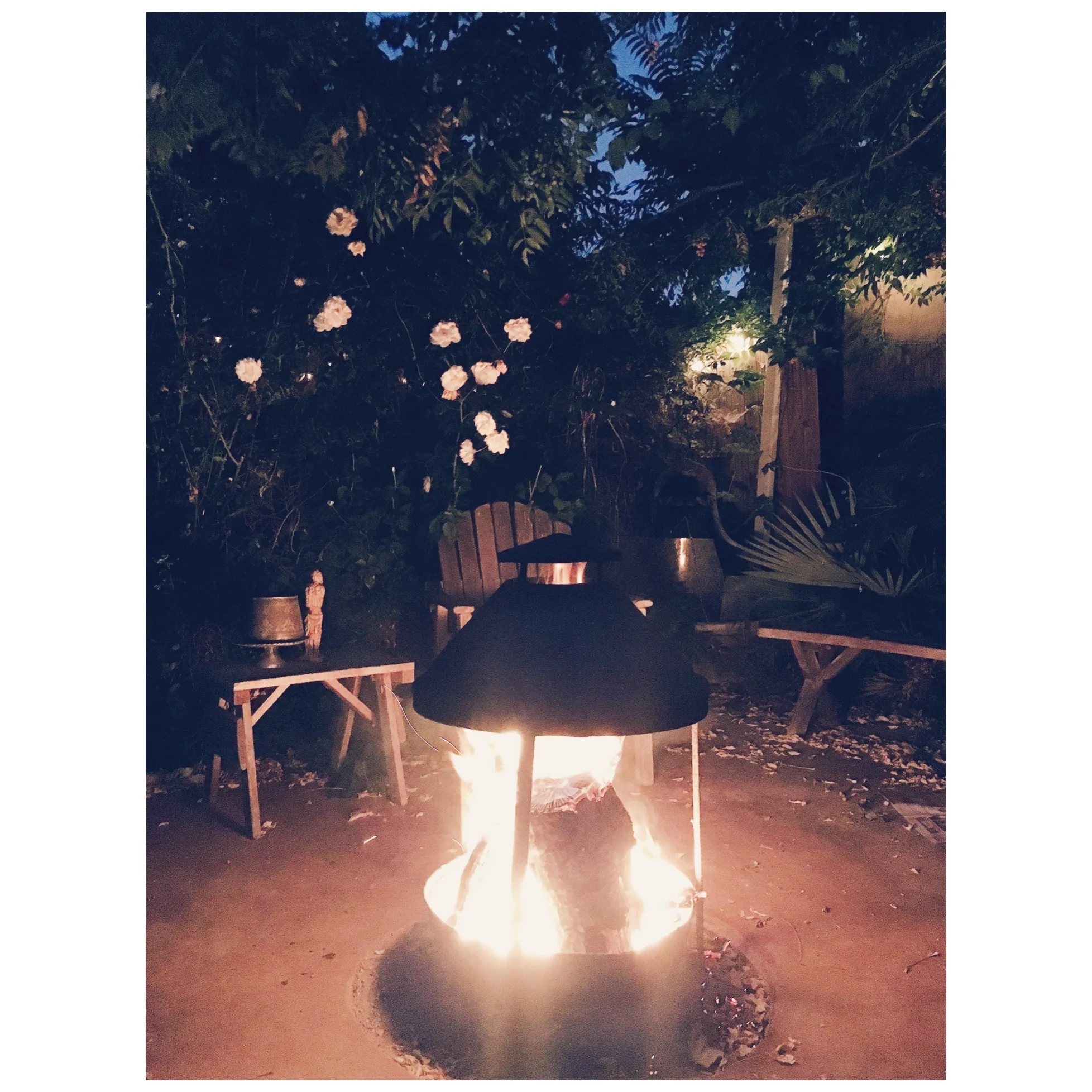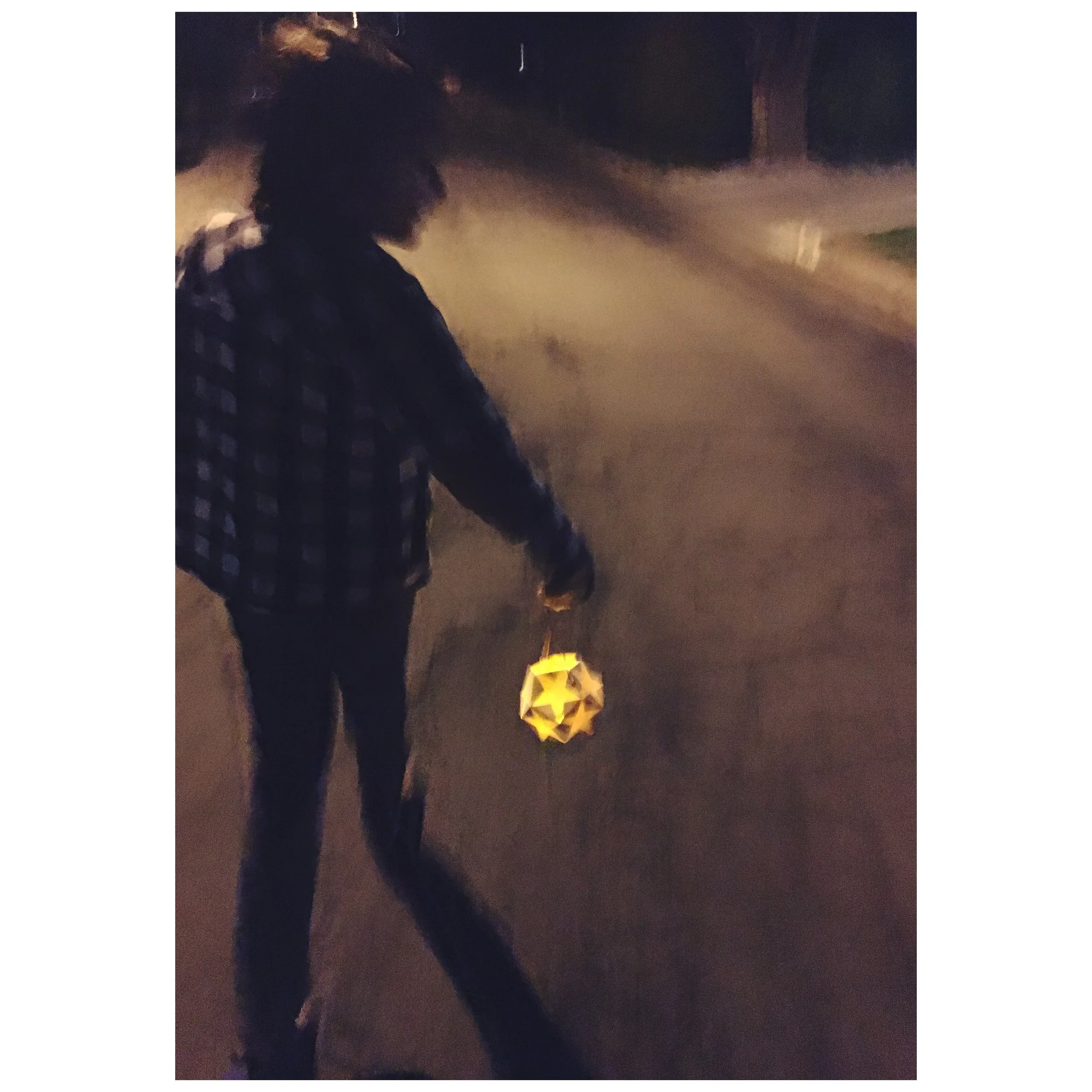
Waldorfish Blog
Celebrating Michaelmas
The seasons are shifting.
For some of us the relief of fall is on the horizon. For others, the arrival of spring has been long awaited.
Last week I noticed that I was craving soup. Like, CRAVING. Never mind that it's still in the mid 90's where we live. For Brian, this seasonal shifting means a trip to our local foothills and his beloved Apple Hill (insert images of apple cider, apple donuts, etc, etc, here). Of course, we're a few weeks ahead of ourselves still, but....it's coming. Can you smell it?
Michaelmas is approaching as well. This brings to mind the year that Brian almost (almost) had our kids believing that he saw a Michaelmas dragon sale going up in the parking lot of a local chain store near us. Think Christmas tree lot, but with dragons of assorted temperaments, colors and sizes. Thankfully our kids (mostly) appreciate our sense of humor. So far anyway.
The change in season brings new opportunities to come together and celebrate!
Here are two pieces that we love for this time of year.
"Modern parenting seems to dictate that we should protect our children from the bogey and even from knowledge of its existence. But “it is in the world already.” Children know the terrors that lurk under the bed, in the dark, and in the whispers of grownups.
With fairy tales and golden capes and wooden swords and songs, we stop lying to them. When we show them the monsters and evil hiding in the stories, and help them shape their weapons, when we give them the words to “conquer fear and wrath,” we validate what they already know – that there are dragons."
On Dragons and Making Swords... read the full piece here
No matter which hemisphere you call home, this piece also offers many ideas for consideration.
"As a Waldorf-inspired homeschooler, you have no doubt noticed that a healthy festival life is one of the anchors around which Waldorf Education is organized. These rituals and festivals have traditionally contributed to the stability of communities of the past, and now brick-and-mortar schools of current time. They create an opportunity to relate to the seasons, and to each other.
What then, does this mean for those of us who have chosen to leave a local Waldorf school, or, to never attend one at all? What meaning do these festivals, or feast days as they are traditionally called, have when they are practiced in much smaller group settings without institutional support, or even at home within individual families?"
In Praise of Balance: A Healthy Festival Life ... read the full piece here
Additionally, take a look at our Michaelmas Pinterest board for plenty of ideas, tutorials and resources.
All our best to you,
Robyn & Brian Wolfe
Related content:
In Praise of Balance: A Healthy Festival Life
As a Waldorf-inspired homeschooler, you have no doubt noticed that a healthy festival life is one of the anchors around which Waldorf Education is organized.
These rituals and festivals have traditionally contributed to the stability of communities of the past, and now brick-and-mortar schools of current time. They create an opportunity to relate to the seasons, and to each other.
What then, does this mean for those of us who have chosen to leave a local Waldorf school, or, to never attend one at all? What meaning do these festivals, or feast days as they are traditionally called, have when they are practiced in much smaller group settings without institutional support, or even at home within individual families?
If you’d prefer to listen to the audio version of this post, you can do that right here:
It becomes easy to slip into thinking that our home-grown festivals and celebrations need to resemble what's happening at Waldorf schools - and if they don't, that we are not doing it correctly - that our children will be missing out on something vital. Spend any time at all on social media and this feeling increases exponentially.
How could the pursuit of balance change your home festival life?
(Initials in parenthesis indicate which author is speaking.)
(RB) For several years in a row I was a single parent. I single-mama'd my way through all the holidays and festivals - most years missing several altogether, especially the first week or two of Advent. Generally by the time I realized it was underway (usually because I saw someone else's beautiful post on social media) I considered it a major victory if I could slide across the evergreen bough finish line with a lit candle in hand, muttering "...the fourth light of advent, is the light of.....".
I started out those years feeling as though I was giving my children a somewhat "less than" festival experience. Thankfully (and a bit painfully) it was also during this time I was reminded that "comparison is the thief of joy". I began to recognize that all the striving to provide my children with an experience as good as their school experience was ultimately only making me feel like I was failing. Clearly it wasn't serving me or them. Eventually I realized there was far more value in doing a few festivals really well each year (i.e., deeply imbued with spirit) rather than trying to cram them ALL in in a somewhat half-assed fashion. Forced march to the May Faire anyone? What feeling exactly am I trying to achieve here?
As homeschoolers we have infinitely more freedom to dance to our own drumbeat.*
This applies no less to our family's festival life than it does to choosing the curriculum we're going to use! When considering the festivals coming up in any given season, we encourage you to start by identifying the overall feeling you'd like to imbue in your children/family with any given season. Then, work backwards from there and....
Ask yourself:
+ which of the festival options for this season will help us achieve that feeling?
+ do we need to do all of them? (seriously. do you?)
+ is there one that resonates the most with our family's values?
+ how can I keep this simple?
+ what ONE or TWO activities might we do?
Remember, even in Waldorf Schools there is great variation in terms of participation in festivals.
(CH) Most importantly, don't be afraid to improvise. The first Michaelmas after we started homeschooling, my husband and I were working away from home and 20 minutes from the ocean. It was exciting to have the freedom to take school on the road, but we were feeling the separation from the Waldorf school we had celebrated festivals with over the previous five years. After reading Michaelmas verses together at home we drove to the beach and made a big dragon in the sand. That night we lit a fire and wrote our personal "dragons" down on paper, then threw them into the flames to be slain.
A message from a Michaelmas celebration.
Our son, who was 8 at the time, took it all very much to heart. As we wrote our wishes on paper by the fire, we glanced over to find that on one piece he had written: "For those who don't have anyone to help them slay their dragons." He clearly understood that the act of transforming paper into ash was a form of prayer/intention.
Keep it simple, believe in the ritual yourself, and the messages will not only reach your children, they will be mirrored back to you in beautiful and unexpected ways.
Last year we missed Martinmas (a personal favorite of mine) but this year we made lanterns in stages the week before the Feast of St. Martin. On the night of November 11th we made and ate soup together, read Martinmas verses, and walked the dark streets of our neighborhood together by lantern light -- just as children on the streets of many European countries do (lanterns being a sophisticated extension, some believe, of the bonfires that preceded them).
My husband's uncle is a priest with a deep knowledge of the saints, and I sent him a picture of our son walking with his lantern. His response: "Great experience. He is blessed to learn these traditions first-hand." There was no question about how many others were celebrating with him. Clergymen-and-women understand better than anyone what these fall and winter rituals mean. They are taken in community (and what is a more primal form of community than family?) but ultimately, they are solitary expeditions into our most hidden aspects of self.
Simplicity brings joy, light and connection to festival life!
There is clearly no substitute for the excitement and energy of large gatherings. In their healthiest forms we mirror one another, and we grow. However in some very important ways, the smaller-scale the ritual (and sometimes, the fewer the rituals we engage in) the more direct the experience can be and the more deeply the meaning can resonate.
Sending love to you all this season,
Cristina & Robyn
Related content:
Cristina Havel lives in Southern California where she and her husband have worked together for nearly 2 decades. They homeschool their son using the Waldorf pedagogy as a guide and believe in the transformative powers of art and nature.
An early career as a park ranger led Waldorfish co-founder, Robyn Beaufoy, to her love of illustrating and education. Trained initially as both a public school and Waldorf teacher, she has been involved in art + education for over 20 years, including homeschooling her two children. Robyn is currently working as the manifestor of the creative vision held by the Waldorfish team. Working out of the premise that life is short (but sweet!), she empowers soul-filled teachers & families to (re)find their JOY in teaching and making art.
All photos: Cristina Havel
(*We believe Waldorf homeschooling families are uniquely positioned to carry forward a faithful interpretation of Rudolf Steiner's vision for education. Here's an additional post focused on this idea.)
Celebrating Advent
Despite these different leanings, our common searching for Light in the darkness of Winter unites us.
Within Waldorf classrooms, festivals such as Advent are not taught as fact but are offered in the form of stories, allowing the children great freedom to absorb the festivals as they will.
The season of Advent begins four Sundays prior to Christmas and culminates on December 24th.
In the tradition of the Christian churches, one candle was lit each Sunday until the light of four candles heralded the birth of Christ. Kwanzaa, Hanukkah, Christmas, Yule, Diwali, and the celebration of Buddha's enlightenment all take place in this darkening time of year.
Despite these different leanings, our common searching for Light in the darkness of Winter unites us.
Within Waldorf classrooms, festivals such as Advent are not taught as fact but are offered in the form of stories, allowing the children great freedom to absorb the festivals as they will.
When presented in a spirit of wonder and awe, something of the true spirit of each festival will speak to each child in unique ways. Many Waldorf classrooms celebrate Advent, beginning with a simple candle-lighting in preschool to an all-class assembly in the grades. Each grade class leaves the assembly with their own candle enabling them to carry the light and warmth of Advent back to their individual classrooms.
BRINGING ADVENT HOME
For those with spiritual leanings who don’t feel that they have arrived at a well-defined spiritual destination, this time of year can present a predicament. You may find yourself wondering what you can share with your children about this time of year when you yourself don’t feel like you have it all figured out. If you are looking for ways to incorporate the Advent season into your homelife, perhaps consider some of the following suggestions.
*Build a small Advent wreath out of plant boughs, or other natural material. The wreath can be held together with ribbons or wire. Add elements each week to correspond with the verse below.
*Recite the following verse, spoken in Waldorf classrooms around the world, while you light a candle each Sunday of Advent.
"The first light of advent is the light of stones, Stones that live in crystals in seashells and in bones.
The second light of advent is the light of plants, Plants that reach up to the sun, and in the breezes, dance.
The third light of advent is the light of beasts, The light of hope that we may see in greatest and in least.
The fourth light of advent is the light of man, The light of love, the light of thought, to give and to understand"
*Advent is a time of preparation. Children can busy themselves making handmade gifts and cards, or holiday decorations for your home. We are curating a growing collection of gift ideas that children can make for others!
*Invite family or friends over to join your family for an evening of carols and gift-making or baking.
This list is by no means exhaustive. What’s most important is to find or create traditions for your family that are meaningful. My hope for this holiday season is that no matter what our beliefs are, that we are all working towards being the most loving, compassionate people we can be — bringing the light into ourselves. Our children need that.
All love this holiday season,
~Robyn Beaufoy, co-founder and CEO, Waldorfish
Related content:
On Dragons and Making Swords :: Christy Corp-Minamiji
Fairy tales are more than true — not because they tell us dragons exist, but because they tell us dragons can be beaten.
swords fashioned by the dws morning glory class 0f 2013
I’ve loved this internet-ubiquitous quote, typically attributed to G.K. Chesterton, for a long time. To me it conjures images of golden capes, wooden swords, and bringing light to the fears that lie snarling in the caves of our hearts.
When I looked up the words to verify them for this post, I found something even better. The above line is actually the work of author Neil Gaiman, paraphrasing the longer Chesterton passage.
Fairy tales, then, are not responsible for producing in children fear, or any of the shapes of fear; fairy tales do not give the child the idea of the evil or the ugly; that is in the child already, because it is in the world already. Fairy tales do not give the child his first idea of bogey. What fairy tales give the child is his first clear idea of the possible defeat of bogey. The baby has known the dragon intimately ever since he had an imagination. What the fairy tale provides for him is a St. George to kill the dragon. Exactly what the fairy tale does is this: it accustoms him for a series of clear pictures to the idea that these limitless terrors had a limit, that these shapeless enemies have enemies in the knights of God, that there is something in the universe more mystical than darkness, and stronger than strong fear.
When my children first started Waldorf education, like most new Waldorf parents, their dad and I felt like we had wandered into a foreign country.
One of the most baffling things was this Michaelmas deal. I knew the word from my obsessive reading of old English mystery novels, but I’d heard it in reference to university terms, and couldn’t figure out what that had to do with kids and dragons. Internet research wasn’t any more help. Something to do with the story of St. George? Okay, but who was this Michael guy? And why did my second grade daughter need a peasant costume and how was I supposed to do this in a couple of weeks?
Over the years, Michaelmas has become one of my favorite Waldorf festivals – as Gaiman would say, not because the dragon exists, but because it can be beaten.
Modern parenting seems to dictate that we should protect our children from the bogey and even from knowledge of its existence. But “it is in the world already.” Children know the terrors that lurk under the bed, in the dark, and in the whispers of grownups.
With fairy tales and golden capes and wooden swords and songs, we stop lying to them. When we show them the monsters and evil hiding in the stories, and help them shape their weapons, when we give them the words to “conquer fear and wrath,” we validate what they already know – that there are dragons.
Instead of closing the closet door and saying, “Don’t worry honey, there’s nothing bad in the night” as we lock and bar our windows and doors, we give them a light to shine into the shadows. We acknowledge the monster, show them its dimensions and limits, and give them the tools to rescue themselves.
My children are well beyond the years of wooden swords. The oldest is going into 10th grade – her second year of public school. My son was part of his class dragon last year; this school year he will turn 13. And our youngest daughter is in the between-land of village and dragon, heading into 4th grade. Their dad and I don’t worry much anymore about the effects of cartoon violence or “scary stories.” Our dragons take the form of traffic and strangers as our children head independently into the world. Their monsters lurk in the caves of peer pressure and college choices.
But each of them has been at some point a knight of Michael. And they know that dragons can be beaten.
Christy Corp-Minamiji is our reluctant muse. A mom of three distinctly divine, loved-by-us kids, she takes everything, and mostly herself, with a grain of salt. Blogging veterinarian, freelance writer, runner, and soon-to-be-author, she took our beg and ran with it. Literally.
Related content:
Looking for something?
Welcome to Waldorfish! We started this adventure in 2012 out of a desire to make Waldorf training more accessible to class teachers in remote locations and to homeschooling families everywhere! Read more, click here.
WE WON! Our Weekly Art courses were voted “best interactive art program.” Learn more about the award, here.
A few of our most popular blog posts:



























